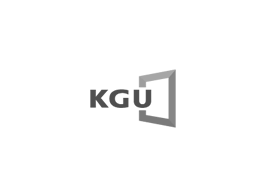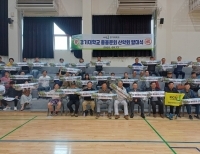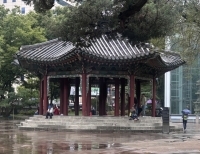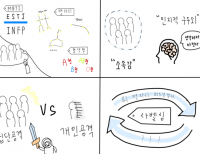The Shinbundang Line began operating on October 28, 2011, and is currently one of the major public transportation systems connecting Seoul and Gyeonggi-do. The Shinbundang Line was built as an express line for the Suin-Bundang Line, aiming to provide a faster connection between Gangnam and Pangyo with an innovative slogan of “15 minutes from Gangnam to Pangyo.” The Suin-Bundang Line takes a roundabout way to Seoul through Bokjeong Station, resulting in increased travel time from Bundang to Seoul. To address this issue, the Shinbundang Line was constructed, consisting of 16 stations as the first privately proposed railway project in Korea, connecting Gwanggyo Station in Suwon, Gyeonggi-do to Sinsa Station in Gangnam-gu, Seoul. Gwanggyo Station is particularly significant as it is the only subway station near Kyonggi University, with many students relying on the Shinbundang Line for their daily commute.

The biggest hot topic of conversation about the Shinbundang Line is the fare. Questions arise about why the fare keeps rising and why it is more expensive compared to other subway lines. Unlike Seoul subway lines 1 to 9, which are state�operated, the Shinbundang Line is a private corporation. The fare for the Shinbundang Line is calculated by adding the ‘basic fare + separate fare for each section + over-distance.’ As of March 2024, the line is divided into three sections: Sinsa�Gangnam, Gangnam-Jeongja, and Jeongja-Gwanggyo. The fare for the Shinbundang Line has been adjusted from October 7, 2023. The official reasons for the adjustment are the increase in the basic fare of the metropolitan subway and regular fare adjustments. Why is it so expensive? This is because problems such as different operators and shares are complicated in each section. Since the companies operating each section are different and each company has a different largest shareholder, the line requires up to three additional charges. The basic fare for the Shinbundang Line is 1,400 won. In addition, an additional ‘separate fare for each section’ is charged for each section. In short, the fare increases if you pass Gangnam Station and Jeongja Station.
Here are the perspectives of Kyonggi University students on the fare increase. Pharos interviewed two students using the Shinbundang Line:
Interview
Q1. How often do you use the Shinbundang Line?
Major in Chinese Language & Literature, 21, Lee: I use it about 5 times a week as I'm currently interning in Seoul.
Major in Applied Statistics, 22, Kim: I use it 5 to 6 times a month.
Q2. How much is the average fare per day or month when using the Shinbundang Line?
Major in Chinese Language & Literature, 21, Lee: It costs about 6,000 won to 7,000 won a day if I return to Seoul. Calculating for a month, it amounts to about 150,000 won.
Major in Applied Statistics, 22, Kim: I think it costs about 6,000 won per day.
Q3. What do you find convenient while using the Shinbundang Line?
Major in Chinese Language & Literature, 21, Lee: First of all, I use the Shinbundang Line because it is located close to my house. I think I use the Shinbundang Line more often because it is faster and cleaner than other transportation. In the past, before the line was built, I used another station on the Suin-Bundang Line, but the speed of movement was significantly slower in the past.
Major in Applied Statistics, 22, Kim: The most convenient part is the driverless system, ensuring a highly accurate timetable. Unlike other subways that sometimes experience errors, the Shinbundang Line rarely faces such issues.
Q4. What do you think about the Sinbundang Line’s adjusted fare?
Major in Chinese Language & Literature, 21, Lee: I’m very upset because the fee rises whenever I blink my eyes. The fare rises frequently and it is too expensive but I have nothing to say because the company is in a deficit. There are season tickets, but they aren’t good because they can’t be used for transfers. The National Transportation Fare Policy always makes an exception for the Sinbundang Line, so people like me who use the Sinbundang Line are always bummed.
Major in Applied Statistics, 22, Kim: I think that they need to decrease the fare. I am upset about the fare because it was not cheap originally and when I compare it to KORAIL there is a big difference. Therefore, I’m trying to use buses after adjusting the fee. I prefer the bus at the same or cheaper price compared to the Shinbundang Line because I can sit down. I only use the Shinbundang Line when I am on an exact schedule.
Q5. Do you have any brief opinion or recommendation about the Shinbundang Line?
The time is inconvenient because the last train is soon after the Jeongja Line. I was bothered because when I go home, I should use the Gwanggyo Line, but it isn’t running in the early hours. Furthermore, I usually feel the train’s interiors are so hot in summer and so cold in winter. I think every year that the train’s inner part doesn’t adjust to the temperature in summer.
In addition to the fare, the Shinbundang Line’s future plan is an issue. According to the Ministry of Land in February 2022, the Shinbundang Line will have completed level 2 of expansion in 2023. Level 2 is the expansion that connects the Shinbundang Line to Yongsan Station. Level 1 connects to Sinsa Station. Level 2 will connect Sinsa Station and Yongsan Station. The line has a plan to start at Sinsa Station, pass the Dongbinggo and the National Museum of Korea, and finally expand to Yongsan Station. It was originally planned to perform a field study in 2018 and complete construction in 2019. The U.S. army base is located in Yongsan so the U.S. army delayed the plan of the field study. The government expects a construction period of 72 months. If the Shinbundang Line can’t work with the U.S. army, the construction period will be delayed.
A more serious problem will be if they complete the field study but the opening will be delayed if they face an unsuspected problem. According to the procedure, they will get permission for environmental effects evaluation and underground safety impact assessment after the field study. If during the permission process they hit an unsuspected situation like discovering cultural assets, the construction period will be further postponed. Builders say this process will take more than a year. Even after Level 2 begins, problems may arise. The last train from Gangnam Station operates until 11:55 p.m. In the past, the last train operated until 12:30. The current last train is earlier than in the past. If the Sinsa�Yongsan parts begin operation, people say the last train time will be earlier than now. Also after the extension, the number of riders who use the Shinbundang Line will increase rapidly. The rush hours (7:00~9:00 a.m. and 5:00~7:00 p.m.) will be crowded with people. They suffer because of the crowds. The Shinbundang Line’s degree of congestion is 133% in reality. If one train’s limit number is 160, the Shinbundang Line averages 212 people. After the Level 2 expansion begins, people will worry about chaos.
As you can see, the Shinbundang Line’s expansion is controversial, as are the expensive fares. The Shinbundang Line is considered a success story in changing the system of traffic with Seoul as the center. The Shinbundang Line has also contributed to city development and growth in the economy solving traffic congestion in the downtown area in Seoul and around the area for several decades. It is recognized as a good case for connecting Seoul and other cities through the express. However, rising fare problems and extended problems are the cause of people’s complaints. The tradeoff for speed is the expensive fares and degree of congestion. Many people who use the Shinbundang Line don’t know about this problem. For this article, people can get an opportunity to consider about the Shinbundang Line’s pros and cons, and be informed about the Shinbundang Line’s problems.
78th Reporter • LEE HYEON SEO • zzhs00@naver.com
80th Reporter • KIM YU JIN • yujinkim627@gmail.com
 Freedom Given to Youth: An Opportunity for Choice or a Burden of Constraint?
“Are we truly free today?” Classical literature is far more than time-honored stories. It offers profound insights into human nature and society that transcend time, remaining a valuable resource for examining the challenges our world faces today. This article will draw on George Orwell’s 1984 and Charles Dickens’ Oliver Twist to explore the contemporary issues of youth housing and the emergence of a surveillance society ...
Freedom Given to Youth: An Opportunity for Choice or a Burden of Constraint?
“Are we truly free today?” Classical literature is far more than time-honored stories. It offers profound insights into human nature and society that transcend time, remaining a valuable resource for examining the challenges our world faces today. This article will draw on George Orwell’s 1984 and Charles Dickens’ Oliver Twist to explore the contemporary issues of youth housing and the emergence of a surveillance society ...

 [단신] 산악회, 본교 동문의 버팀목이 될 수 있도록
[단신] 산악회, 본교 동문의 버팀목이 될 수 있도록
 [사회메인] 노인 인구 1,000만 시대, 준비 없는 사회가 불안해
[사회메인] 노인 인구 1,000만 시대, 준비 없는 사회가 불안해
 [네컷만화] 라벨링 문화
[네컷만화] 라벨링 문화
 [진리터] 결국 우리 모두 돌아볼 것이니
[진리터] 결국 우리 모두 돌아볼 것이니

 목록
목록











